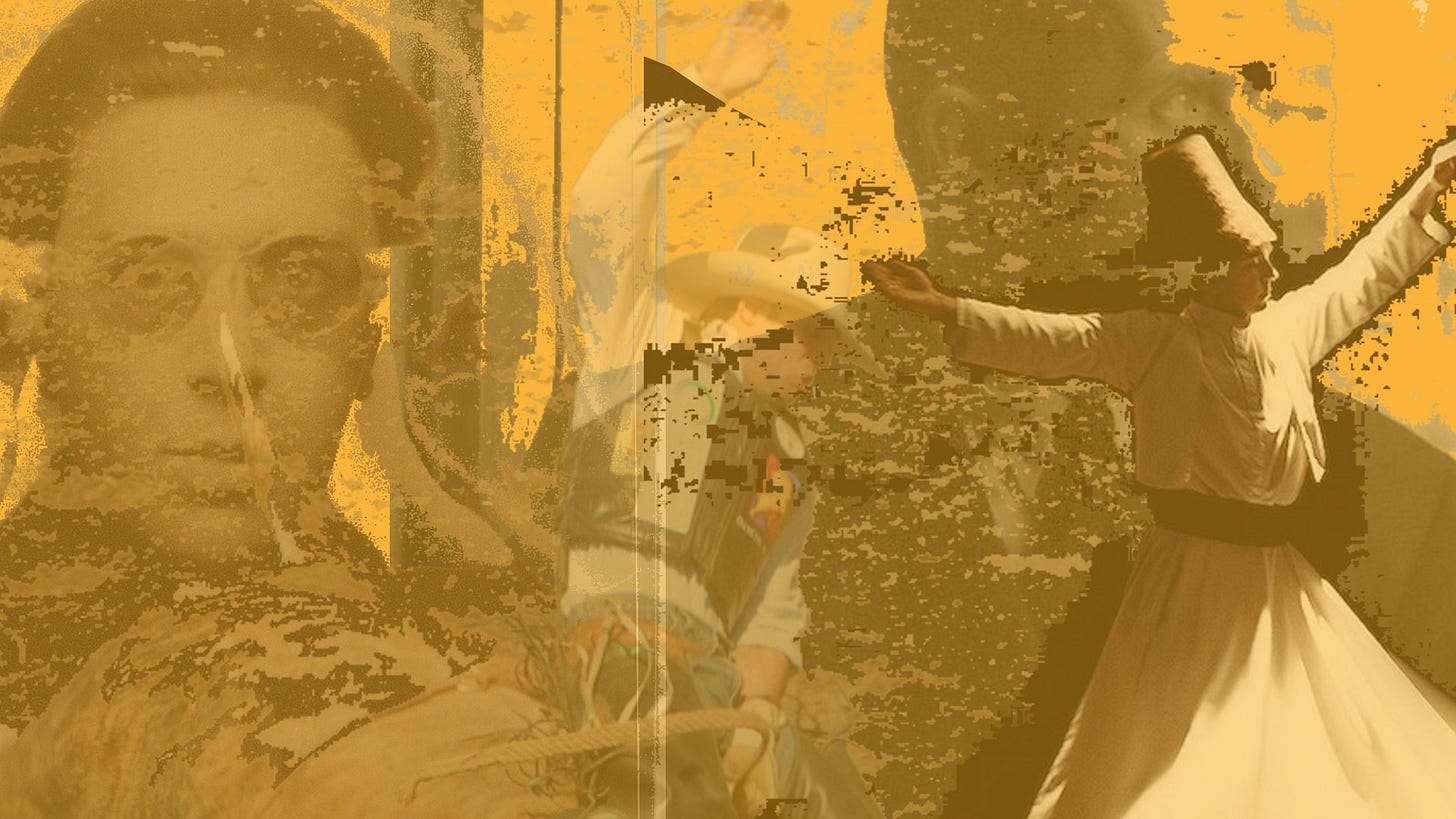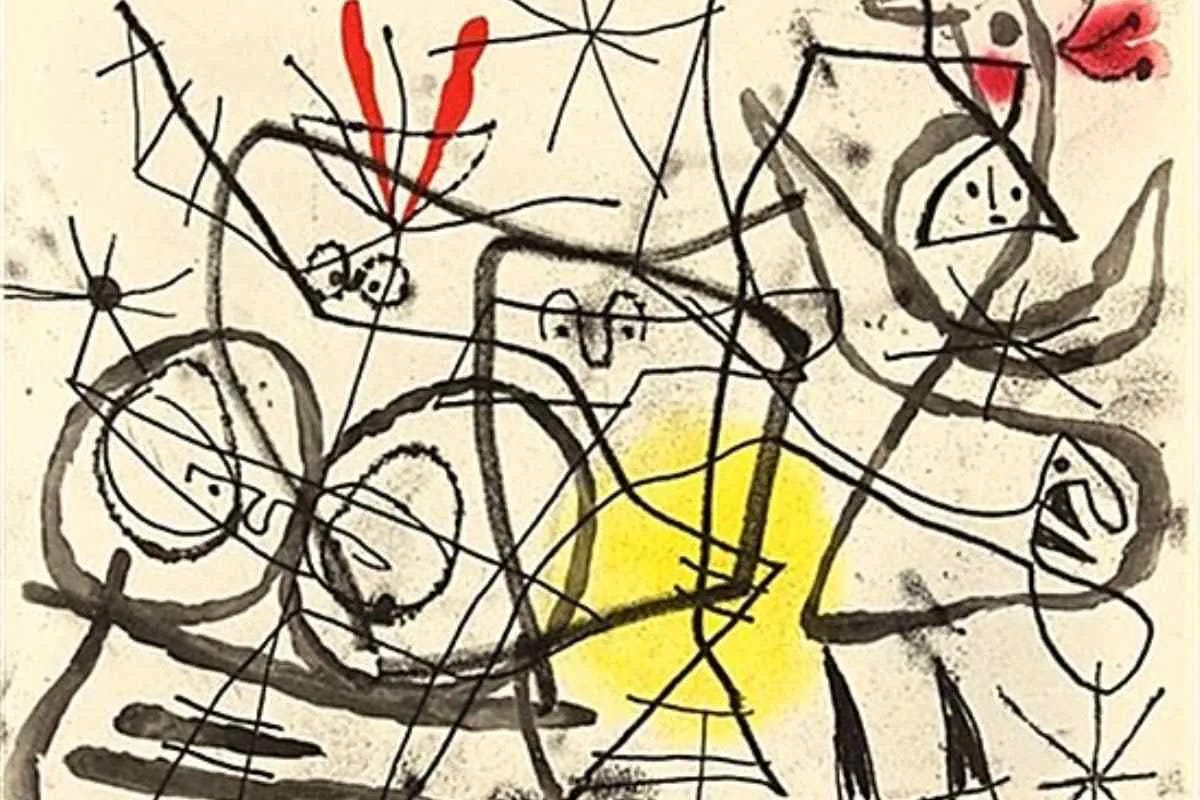Can hypnosis unleash your inner talent?
Thursday Theses: Andre Breton, Whirling Dervishes, and Bull Riders
The early twentieth century saw a number of developments in inquiry into the human mind.
Among them was the implementation of hypnotism, specifically looking for where inspiration comes from.
Is there a natural well of potential in the human soul?
Can the power of persuasion drill down and strike oil?
Whether it was applied to painting or writing, they tested the human soul for some natural creative impulse running like a subterranean river beneath intuition.
There is something to this, I think.
The idea of trances and altered states of consciousness allow us to explore a facet of humanity that is not explored typically.
Consider, if you will, the Whirling Dervish.
I am fascinated by these figures.
The Whirling Dervish spins in circles with one hand toward the sky, toward God to receive from Him and one hand toward the earth to deliver from Him.
In the Dervish’s spin, he enters into a trance, a bliss.
I’m captivated by the idea of altered states of consciousness because those states are fundamentally about how the self relates to the broader reality.
That is to say, when comparing these states, we begin consider the fluidity and flexibility of the self when interacting with a variety of conditions and stimuli.
This ranges from getting drunk to taking a trip on LSD to getting lost in the act of dance to practicing meditation.
Despite the helpless fear I had the first time I rode on the back of a motorcycle, there was a bliss to being swept away down the country roads as the wind whipped through my hair, despite the persistent inability to truly focus directly on any of the given things hurtling past me.
I imagine you must feel the same thing when you go riding on a horse across the sunset plains.
One can imagine the intense presence of those 8 seconds (or less) a cowboy has during the rodeo.
In those moments, I have to imagine the entire world slowing down.
When the poet is out lying in a field contemplating a butterfly, he’s bound to be there.
That is to say, the goal and joy is to be intensely present, riding the present moment like the cowboy rides the bull.
It fights to throw you off, but you’re on it — you’re not letting the moment get out from under you.
That’s the essence of mindfulness in a way, though typically mindfulness is thought of being a bit more relaxed.
All the same though, the meditator sits, legs crossed, ebbing and swaying with the present moment.
Just the same, the bullrider must move with the bull, not against him.
This sort of focus in understanding and controlling the self is the heart of our conversation about hypnosis.
That’s all about the relationship between the conscious and unconscious mind.
Does one try to ride and break the other?
It’s about reclaiming the conscious mind — a mindful mind — to zero in on the little pieces of the world around us that typically escape.
When André Breton pioneers what he calls automatism — or surrealist automatism — he launches an investigation of the unconscious mind, to see what it is able to communicate in artistic form.
The art carried a range, of course, from the physical arts to the written word.

Joan Miró was another of the famous surrealists who experimented with automatic art.
These hypnotists also experimented in automatic writing.
Throughout history, in different cultures as in China, automatic writing was thought to occur as induced by spirits or gods.
The idea of automatic writing belies an awfully nice idea — that we possess an inner well-spring of inspiration, something spiritual that flows out of us if we but call for the water-witch and dowse our way to finding it.
Now, that’s a dandy of an idea, considering I’m writing this on one of those nights where I have to punch the words out while struggling to channel myself into that desired flow state.
The idea that beneath it all there is an inner power and process that can be unleashed by persuasion provides a really interesting framework for us to work off.
Could a writer tap into an unconscious level to bring out new ideas, and uninhibited writing?
According to the internet, automatic writing-focused guided meditations exist, if that’s the sort of thing you’re into.
But that might bring us back to my prior interest — the power of mindfulness.
We do see a popular rise in our contemporary culture to find a mindful state.
We need more mindfulness, to be sure.
Mindfulness, naturally, helps not only how we explore our natural environment and savor our lives, but also the art and detail that is around us.
To really listen to a piece of music and take it in, or trace the brushstrokes of a painting with our eyes, allows us to receive art.
This is as important as creating art.
Now, there are concepts like “intuitive music” around, suggesting that there’s a way to draw out some naturally-inclined tunes.
Naturally, this may already be a simple enough concept — especially among freestyle rappers and improv jazz artists.
This idea is credited to Karlheinz Stockhausen as a form of process music, emphasizing the process as a component of the end result.
These folks have a compelling and deep knack for finding the words and notes in a flurry or gush of art.
As for how it is tapped into, that’s a muscle to be exercised, and an intuition to be trained.
The soul is a deep, deep realm we spend our whole lives exploring.
My intention is to find a hypnotist to put me in a trance on my YouTube channel, just to see if this’d work.






Let me know if you find a hypnotist! I have to see this!! We need to talk more on this! This was a fun and interesting read! Thanks